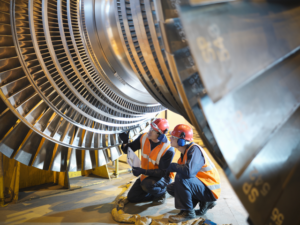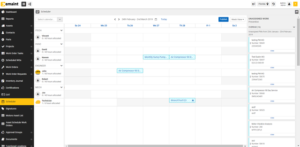Well-managed preventive maintenance (PM) programs reduce equipment failures, increase machine reliability, and extend asset life. Maintenance managers who use preventive maintenance develop a more accurate, workable budget because they know which activities occur regularly.
In contrast, reactive maintenance, or a run to failure approach, lets machinery operate right up until it doesn’t causing budgets to balloon. Although there might be some situations where reactive maintenance makes sense, many more preventive maintenance examples exist to support the long-term benefits of PMs.
Five Preventive Maintenance Examples
These five preventive maintenance examples represent critical yet standard activities routinely performed by reliability professionals.
1. Preventive Maintenance Equipment Inspections

Regularly scheduled machine inspections are a common example of preventive maintenance in action. Credit: Getty Images
Calendar-based inspections of facility equipment can represent one of the most critical preventive maintenance tasks routinely scheduled by maintenance managers. Regular inspections, including electrical boxes and HVAC units, ensure facilities properly operate and stay up and running. However, preventive maintenance can sometimes take a more critical turn depending on the facility.
For instance, preventive maintenance at a university or college is essential for ensuring students’ safe and comfortable learning environment inside and outside campus facilities. Maintenance professionals often use a Computerized Maintenance Management System (CMMS) software, such as eMaint, to automate inspection work orders and preventive maintenance tasks and document on-time completions. A CMMS helps support regulatory compliance when it’s time for an audit.
2. Clean Equipment Regularly to Minimize Dirt and Dust
Dirt and dust can destroy machinery, especially mechanical systems. It causes friction and premature wear. The contaminants that build up over time damage seals, cylinder walls, and other components inside of machines. Regularly cleaning those contaminants is another preventive maintenance example that shows how this simple strategy can extend machine life.
3. Lubricate Rotating Parts to Prevent Premature Wear
Lubricants keep critical machine parts moving. For example, a bearing failure could damage a machine and even harm associated machinery, causing a production shutdown. Regular lubrication is a great preventive maintenance example of how to keep machines up and running.
4. Check Machinery Power to Optimize Energy Efficiency
Controlling energy consumption is one of the most effective ways to significantly reduce costs. Create preventive maintenance tasks to regularly check and optimize assets, like HVAC systems, minimizing wasted energy.
5. Repair or Replace Equipment Before it Fails

Schedule machine inspections regularly as part of a PM program.
PMs track and document machine health, letting maintenance professionals make better decisions. But preventive maintenance can also uncover machinery problems. For instance, after several routine preventive maintenance inspections, records show that the machinery also needs frequent corrective maintenance, it’s a strong sign that it’s time to replace the equipment to avoid further downtime or even failure.
How Preventive Maintenance Software Can Help
Simultaneously juggling and organizing numerous preventive maintenance activities is no easy task. Maintenance and reliability leaders using eMaint CMMS software can efficiently and effectively manage PMs. Whether monthly or weekly routes or a daily cleaning inspection of food processing machines, leveraging CMMS software keeps everyone informed of upcoming PMs.
Adding Predictive Maintenance Features to a Preventive Maintenance Program
Once professionals get comfortable with PMs, they often want to add predictive maintenance (PdM) strategies. A growing number of organizations use both preventative maintenance and predictive maintenance to keep machines running. Implementing maintenance software together with remote condition monitoring technology like wireless vibration sensors lets maintenance professionals take that next step from preventive maintenance to predictive maintenance.

